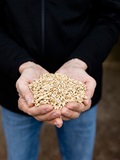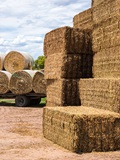Gippsland
20 May 2020
| Date | Gipps 23 | Gipps 22 | Gipps 5YA |
|---|---|---|---|
| 06-Jan-23 | 236 | 100 | 209 |
| 13-Jan-23 | 250 | 100 | 193 |
| 20-Jan-23 | 280 | 100 | 195 |
| 27-Jan-23 | 290 | 100 | 197 |
| 03-Feb-23 | 290 | 100 | 199 |
| 10-Feb-23 | 300 | 100 | 199 |
| 17-Feb-23 | 300 | 100 | 190 |
| 24-Feb-23 | 300 | 100 | 180 |
| 03-Mar-23 | 300 | 100 | 182 |
| 10-Mar-23 | 300 | 100 | 187 |
| 17-Mar-23 | 300 | 100 | 190 |
| 24-Mar-23 | 300 | 100 | 190 |
| 31-Mar-23 | 295 | 100 | 190 |
| 07-Apr-23 | 295 | 100 | 190 |
| 14-Apr-23 | 295 | 104 | 191 |
| 21-Apr-23 | 295 | 108 | 192 |
| 28-Apr-23 | 295 | 113 | 193 |
| 05-May-23 | 295 | 113 | 193 |
| 12-May-23 | 293 | 113 | 209 |
| 19-May-23 | 290 | 113 | 209 |
| 26-May-23 | 290 | 113 | 209 |
| 02-Jun-23 | 290 | 118 | 218 |
| 09-Jun-23 | 290 | 118 | 221 |
| 16-Jun-23 | 290 | 118 | 217 |
| 23-Jun-23 | 290 | 118 | 214 |
| 30-Jun-23 | 285 | 118 | 214 |
| 07-Jul-23 | 285 | 118 | 227 |
| 14-Jul-23 | 283 | 119 | 227 |
| 21-Jul-23 | 280 | 120 | 227 |
| 28-Jul-23 | 280 | 135 | 230 |
| 04-Aug-23 | 265 | 135 | 230 |
| 11-Aug-23 | 265 | 135 | 249 |
| 18-Aug-23 | 265 | 135 | 249 |
| 25-Aug-23 | 265 | 135 | 249 |
| 01-Sep-23 | 265 | 135 | 249 |
| 08-Sep-23 | 135 | 249 | |
| 15-Sep-23 | 135 | 249 | |
| 22-Sep-23 | 135 | 259 | |
| 29-Sep-23 | 135 | 269 | |
| 06-Oct-23 | 135 | 269 | |
| 13-Oct-23 | 135 | 269 | |
| 20-Oct-23 | 140 | 270 | |
| 27-Oct-23 | 140 | 270 | |
| 03-Nov-23 | 140 | 276 | |
| 10-Nov-23 | 140 | 276 | |
| 17-Nov-23 | 160 | 280 | |
| 24-Nov-23 | 160 | 280 | |
| 01-Dec-23 | 163 | 245 | |
| 08-Dec-23 | 165 | 238 | |
| 15-Dec-23 | 183 | 199 | |
| 22-Dec-23 | 195 | 202 | |
| 29-Dec-23 | 223 | 212 |
Notes:
Change in price is the change since the last report. Hay quoted is sourced and delivered locally, GST exclusive unless stated otherwise. It should be noted that local prices quoted may not be the cheapest available, sourcing it from another region may be more affordable, and buyers are encouraged to evaluate all options. Prices are indicative to a mid-range shedded product, and based on the best indication of market value at the time of reporting. It should be noted there is a wide variation in quality of hay, prices for a mid-range product will not reflect the weighted average of trade. Prices will naturally vary based on the product quantity and quality, buyer/seller relationship and the size of the trade.The hay report has been commissioned by Dairy Australia to provide an independent and timely assessment of hay markets in each dairy region. This report is created using data provided by the Australian Fodder Industry Association (AFIA). It should be remembered that actual prices may vary for quality or other reasons. Whilst all reasonable steps have been taken to ensure the accuracy of the information contained in this report, Dairy Australia disclaims all liability to the fullest extent permitted by Australian law for any inadvertent errors and for any losses or damages stemming from reliance upon its content. Dairy Australia recommends all persons seek independent advice and, where appropriate, advice from a qualified advisor before making any decisions about changes to business strategy.
Commentary
- Clear and dry conditions across most of the region this week with the west receiving almost no rain, and an average of 5-10mm of rain across other areas. Average temperatures are starting to trend up towards long-term averages.
- Pastures across the central and east of the region are bouncing back and supplying good green feed due to recent warmer and drier weather. Even though the west remains very wet, some areas have dried enough that select farmers are irrigating their pastures to keep pushing growth along.
- With the ongoing wet conditions in the west, paddock accessibility issues are limiting fertiliser applications and stock being able to forage on the affected pastures. As such, supplementary feeding continues.
- Silage cutting continues around Bairnsdale and most of east Gippsland with the season now in full swing. Even with sporadic rain, cutting continues as paddocks are showing excellent growth and are still on track for 4 to 5 cuts. However, quality is falling with each postponement.
- Hay demand remains stable this week, with fodder continuing to be moved from east to west to supplement poorer pastures. Straw and hay are continuing to be sold out of older stocks as growers’ clear space for the coming season.
- Slight change in pricing this week.
- Cereal hay: -$10 ($190 to $240/t). Prices decrease this week.
- Lucerne hay: -$8 ($505 to $530/t). Prices decrease this week.
- Straw: +/-0 ($80 to $110/t). Prices remain steady this week.
- Pasture hay: +/-0 ($90 to $180/t). Prices remain steady this week.
- Please note: Unless stated otherwise, prices are per tonne, sourced and delivered locally. The price range indicated is for feeds of varying quality with the price range generally indicative of quality of feed. We recommend feed testing and viewing of fodder before purchase to be sure of the quality of feed.

